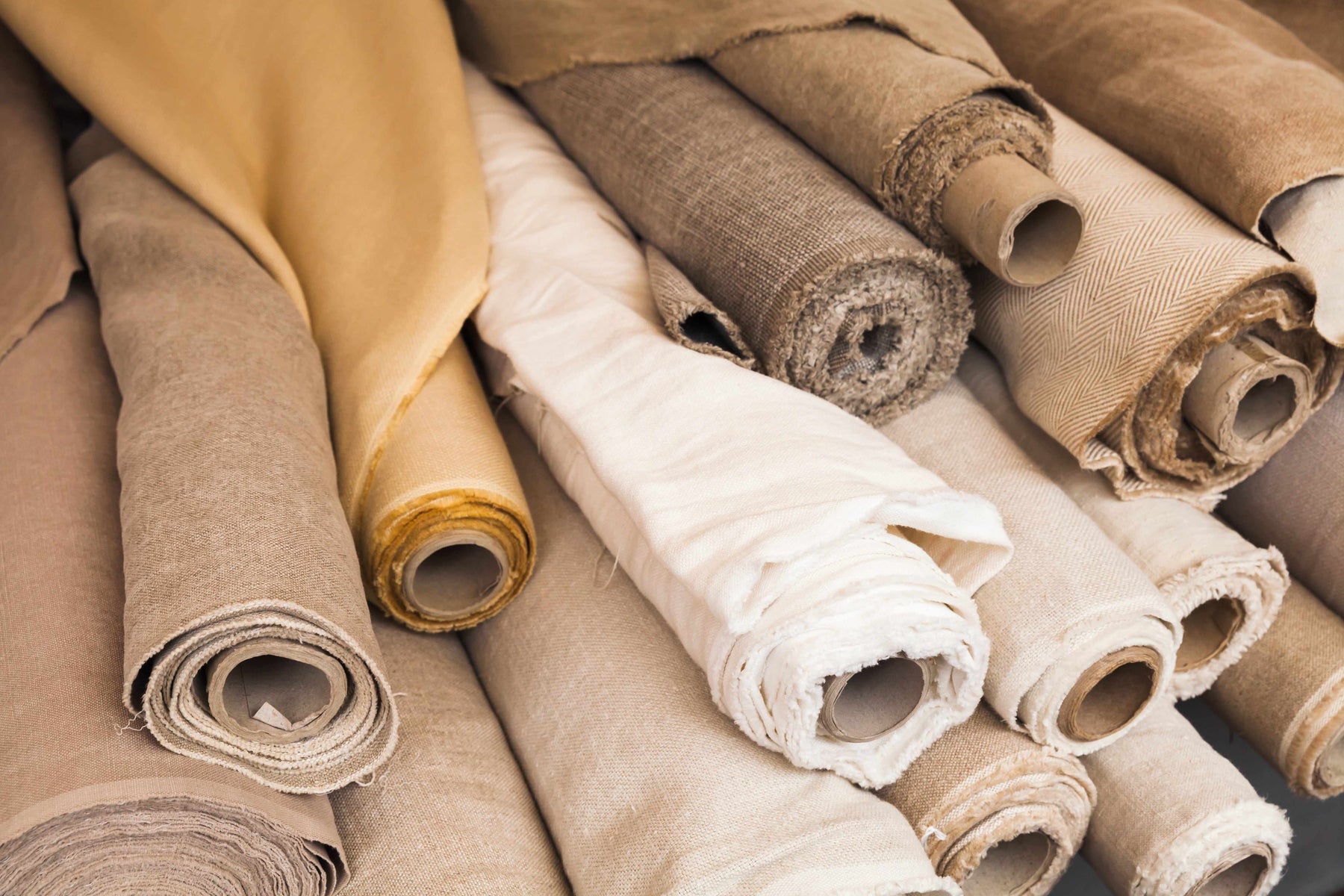
Deadstock Fabrics – What are they? Why use them? Where can you find them?

Deadstock fabrics, as the term indicates, are fabrics that, for some reason, were not sold by its producer or that are not intended for use by the brand that has it in stock, in most cases simply for being leftovers. In the past, deadstock fabrics used to end up in landfills. With the fashion and textile industry looking for ways to become more environmentally friendly, deadstock fabric is becoming a go-to choice for small and medium sized brands, as well as independent designers.
So such fabrics are usually sold off to smaller brands and independent fashion designers who are always looking for high quality fabrics to create their next collection.
It’s really a win-win if you think about it: smaller brands get access to high quality fabrics. The brands that launched the production and the mills that carried out the production score some sustainability branding points by avoiding the waste of fine fabrics and even find an additional source of income, small as it may be. And above all, the environment is freed from yet another batch of fabrics being ditched in landfills.
Is it suitable to use deadstock fabric?
Deadstock fabrics are a unique opportunity for you to create custom garments while finding great fabrics at a good cost/benefit ratio, while taking the sustainability of your brand one notch up by keeping such valuable, high quality fabrics away from landfills and, of course, conveying this message in your brand’s marketing campaigns and social media.
As deadstock fabrics are by definition not reorderable, most designers choose to make a relatively small batch of garments when using such fabrics. It’s a one time deal, but they cannot afford to take a high risk by buying a large yardage. Having this in mind, you may want to market garments or collections produced with deadstock fabrics as being limited editions.
Basically, there are two types of deadstock fabrics: fabric mills production surplus and deadstock designer fabrics.
Fabric Mill Production Surplus
Every factory has deadstock fabrics – it’s seen by many as a necessary evil of the textile industry.
Deadstock fabrics can be the result of a few different situations, all of which have to do with a certain level of uncertainty inherent to fabric production, such as:
- A brand places a large order with a fabric mill, which proceeds to produce it. For some reason, the brand’s purchasing department decides to withdraw the order, but the mill has already produced part of the order. If the brand in question is a good client or has the potential to become one, the mill may absorb the loss even though it is not exactly a fair outcome. In this case, whatever has been produced so far, becomes deadstock fabric.
- In order to ensure that the yardage ordered will be produced, a factory may have to plan to produce a higher yardage than what was purchased as an infinity of problems may occur during production, such as a specific stripe not being printed as all other stripes. In this specific example, there could be a loss of 5 meters out of every 50 meters produced. These hypothetical 5 meters would be deadstock fabric.
- The specific color that the brand ordered for the fabric may end up not being achieved by the mill for a variety of reasons related to scientific aspects of the dyeing process. In this case, the brand’s collection for which said fabric was ordered is compromised and the brand, of course, is not obliged to accept the delivery of a fabric that does not match the specifications it provided. The brand may, therefore, reject the fabric. If it does, there will be more deadstock fabric for us to feast on.
Here at FabricSight, most of the deadstock fabrics you will find come directly from top notch European fabric factories based in Italy, Spain and Portugal. Thanks to strong partnerships we have with such mills, we are able to offer high quality surplus fabrics at competitive prices and without MOQ (minimum order quantity).
What is deadstock designer fabric?
Deadstock designer fabric is the leftover fabric used by luxury and high street brands. Even luxury fashion houses like LVMH are tackling waste by selling deadstock fabric.
You may be able to instantly recognize the print. Most designer brands change their fabric every season, meaning there is a constant surplus of deadstock going to waste. In some cases, designer fabrics are made and never used as plans change, and the plans for the garment are shelved. Such surplus fabric allows you to incorporate a designer element into your garment.
Where can I buy deadstock fabric?
At FabricSight, we stock a wide variety of deadstock fabrics. You can explore our range of selected surplus fabrics here.
Our available stock of factory mill deadstock fabric constantly changes, so we recommend checking back regularly. As these fabrics are surplus, they’re each available only for a limited time, until the stock runs out. For this reason, there is no way to know for how long a deadstock fabric will be available and, therefore, we recommend purchasing a deadstock fabric of your liking as soon as you set your eyes on it.
Give your designs a green tick for sustainability with our deadstock fabrics, as using surplus fabrics means you’re helping reduce waste, as well as the need to produce new stock.
